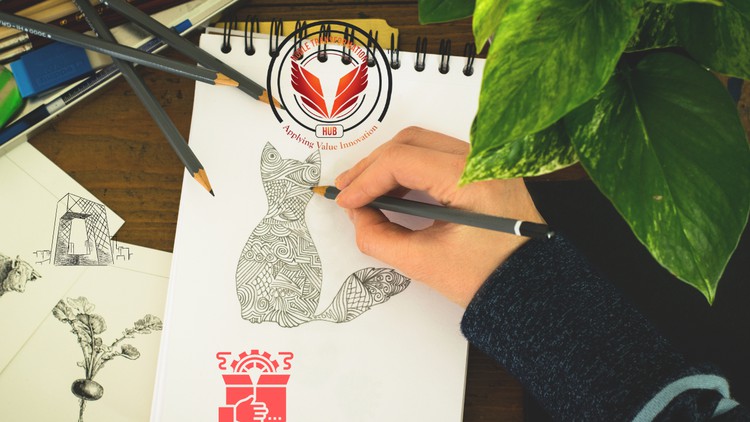
With Real Time Case Study and Case Method
What you will learn
Students can learn about the basic elements of Sketching suggest how to do warmup
Why warming up and keeping our muscle memory intact every time before sketching or ideation session is helpful has been discussed and many tips and tricks
How Textures could be applied to our sketches and shown real-time examples with the pencil sketches made covering natural textures, artificial textures
How to lose ourselves when being stuck during creative ideation sessions
Shown some of the car sketches, portrait sketches, Copic markers sketches
Shown some of the car sketches, portrait sketches, Copic markers sketches and other product design sketches
Description
About the Master Class:
This course teaches about the basics of sketching. How to start being a designer let it be any designer products furniture ceramic textile sketching is one of the basic things what a designer needs. Discourse about the basics of sketching what tools are used, what are the different mediums sketching could be done and starting from warmup how to do the entire ideation process with the help of sketching skills. Also discussed the real-time case studies of sketching what I did for cumulative projects, short projects, UI/UX projects, ideation based projects, sketching related projects in detail. How to use your creativity to do sketching in a different way when you’re feeling stuck. Everything is being covered from end to end in this sketching course.
Design philosophy:
As I used to say in my design courses, that design cannot be learned in the rot learning or Text book way of learning that you do through a chapter wise and remember some formulas that will yield you some solutions. Design is unique and when different people approach the same problems we will get different solutions based on the inputs that designer works on.
So design can be approached in the way of learning through the case studies and by doing action on your own to learn yourself.
Learning by doing and learning by action.
Benefits of the Master Class:
- Students can learn about the basic elements of Sketching suggest how to do warmup, how to do lines, scribbles, circles and start making very comfortable with the white sheet of paper, the fear of blank sheet is always there being a designer particularly when you’re starting of the design career so how to get rid of that has been discussed in detail.
- Why warming up and keeping our muscle memory intact every time before sketching or ideation session is helpful has been discussed and many tips and tricks also have been taught in this course for improving that.
- How Textures could be applied to our sketches and shown real-time examples with the pencil sketches made covering natural textures, artificial textures et cetera.
- Complete teaching about how shadows could be casted in the sketches and what all the elements of shadow stages or shadow cast shadow highlight and reflected highlights etc.
- How to lose ourselves when being stuck during creative ideation sessions and how to do the closing eyes technique.
- When you are in an ideation session how to make thumbnail sketches quickly in order to convey the concept instead of making a detailed sketch which takes time, shown real-time examples for learning and understanding.
- Shown some of the car sketches, portrait sketches, Copic markers sketches and other product design sketches also for real-time learning and explaining how constructing a professional sketch is important being a designer option some of my non-designer sketches also when I started my career initially.
- What is mean by vanishing point how construction lines are important for constructing planes to the objects and 3-D objects and why drawing with different shades of line is important being a product designer to communicate the meaning of shadows highlights construction lines et cetera
Content